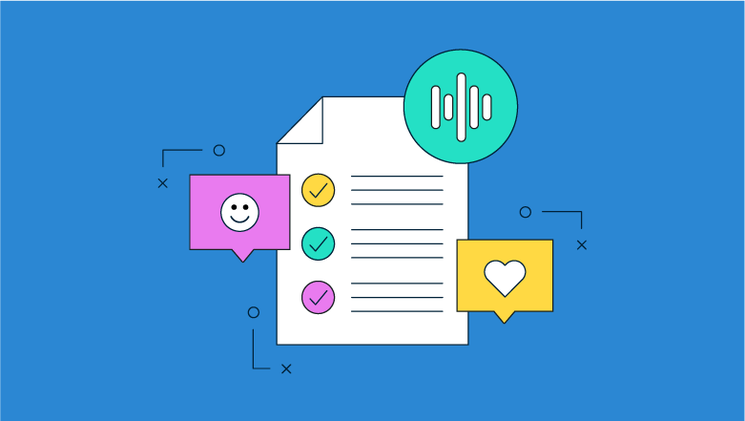Social media has transformed the way we communicate, connect, and express ourselves in the digital age. Among the various facets of social media management, one essential practice stands out – social media listening. In this article, we’ll delve into the definition, significance, and practical aspects of social media listening, providing you with insights that can revolutionize your digital presence.
Introduction to Social Media Listening Definition

1. Definition and Importance
Social media listening definition, also known as social media monitoring, involves tracking online conversations to understand what people are saying about a brand, industry, or topic. It goes beyond mere social media presence, tapping into the valuable insights hidden in user-generated content.
2. Evolution of Social Media Listening
In the early days of social media, businesses primarily focused on broadcasting their messages. However, with the rise of user-generated content and interactive platforms, the need for listening became apparent. Today, social media listening is a crucial component of any comprehensive digital strategy.
Why Social Media Listening Matters
1. Understanding Audience Sentiment
One of the primary reasons businesses engage in social media listening is to gauge the sentiment of their audience. By analyzing mentions, comments, and reviews, companies can identify whether the online sentiment is positive, negative, or neutral.
2. Monitoring Brand Reputation
A brand’s reputation is its most valuable asset. Social media listening allows organizations to keep a pulse on how their brand is perceived in the digital realm. Timely responses to issues and feedback contribute to maintaining a positive reputation.
3. Identifying Market Trends
Beyond brand-centric insights, social media listening provides a window into broader market trends. Businesses can stay ahead of the curve by analyzing discussions around industry-related keywords and adapting their strategies accordingly.
How Social Media Listening Works
1. Tools and Technologies
A myriad of tools and technologies facilitate social media listening. From advanced analytics platforms to user-friendly dashboards, businesses can choose tools that align with their specific needs and resources.
2. Data Collection and Analysis
The process involves collecting data from various social media platforms and other online channels. Advanced algorithms then analyze this data, providing businesses with actionable insights. This real-time analysis is invaluable for making informed decisions.
Key Benefits of Social Media Listening
1. Improved Customer Service
Social media listening allows businesses to address customer concerns promptly. By responding to queries and resolving issues in real-time, companies can enhance customer satisfaction and loyalty.
2. Enhanced Marketing Strategies
Understanding what resonates with the audience enables businesses to tailor their marketing strategies. From content creation to campaign optimization, social media listening provides the necessary intelligence for effective marketing.
3. Competitive Intelligence
Staying ahead of competitors is a perpetual challenge. Social media listening provides a valuable source of competitive intelligence, allowing businesses to identify strengths, weaknesses, and opportunities in the market landscape.
Challenges
1. Volume of Data
The sheer volume of data generated on social media can be overwhelming. Effectively managing and extracting meaningful insights from this vast ocean of information is a significant challenge.
2. Data Accuracy and Relevance
Not all data is created equal. Social media listening tools must sift through noise to deliver accurate and relevant information. Ensuring the quality of data is a constant challenge for businesses.
3. Privacy Concerns
As businesses delve into the private conversations of individuals, ethical considerations come to the forefront. Striking a balance between gathering valuable insights and respecting user privacy is an ongoing challenge in the field.
Best Practices for Social Media Listening
1. Choosing the Right Tools
Selecting the appropriate tools for social media listening is crucial. Factors such as the scope of analysis, user-friendliness, and integration capabilities should be considered when making this decision.
2. Setting Up Effective Queries
The effectiveness of social media listening relies on the formulation of precise queries. Businesses must fine-tune their queries to ensure they capture relevant conversations without being overwhelmed by irrelevant noise.
3. Integrating with Other Marketing Efforts
For comprehensive results, social media listening should be integrated into broader marketing strategies. Aligning listening efforts with content creation, advertising, and public relations enhances effectiveness.
Future Trends
1. Artificial Intelligence and Machine Learning
The future of social media listening lies in the integration of artificial intelligence and machine learning. These technologies promise more accurate insights, predictive analytics, and a deeper understanding of user behavior.
2. Integration with Other Business Functions
As businesses recognize the holistic value of social media listening, integration with other functions like customer relationship management (CRM) and product development will become standard practice.
3. Predictive Analytics
Moving beyond reactive insights, the future of social media listening involves predictive analytics. Anticipating trends and consumer behavior enables businesses to shape their strategies proactively.
How Businesses Can Get Started with Social Media Listening
1. Step-by-Step Guide for Beginners
For businesses new to social media listening, a step-by-step guide is essential. From selecting tools to interpreting data, this guide simplifies the process, making it accessible to all businesses, regardless of size or industry.
2. Common Pitfalls to Avoid
While embarking on the social media listening journey, businesses should be aware of common pitfalls. Understanding these challenges beforehand can save time and resources.
Measuring the ROI of Social Media Listening
1. Establishing Key Performance Indicators (KPIs)
Measuring the return on investment (ROI) of social media listening requires defining key performance indicators. Metrics such as sentiment analysis, brand mentions, and customer satisfaction can serve as quantifiable benchmarks.
2. Analyzing and Interpreting Results
Collecting data is only the first step. The real value lies in the analysis and interpretation of results. Businesses must translate raw data into actionable insights that inform decision-making.
Social Media Listening in Crisis Management
1. Proactive Crisis Prevention
Social media listening is a powerful tool for proactively preventing crises. By identifying potential issues before they escalate, businesses can take pre-emptive measures to safeguard their reputation.
2. Reactive Crisis Response
In times of crisis, social media listening enables swift and informed responses. Monitoring conversations in real-time allows businesses to address concerns, correct misinformation, and regain control of the narrative.
Ethical Considerations in Social Media Listening
1. Respecting User Privacy
As businesses tap into the vast pool of user-generated content, it’s crucial to respect user privacy. Transparency and ethical data practices should guide social media listening efforts.
2. Ensuring Data Security
Protecting the data collected through social media listening is paramount. Implementing robust security measures ensures that sensitive information remains confidential and secure.
The Role of Social Media Listening in SEO
1. Impact on Search Engine Rankings
Social media listening indirectly influences search engine rankings. Understanding user preferences and trending topics helps businesses optimize their content for search engines, positively impacting their online visibility.
2. Leveraging Insights for Content Optimization
The insights gained from social media listening can be harnessed for content optimization. Tailoring content based on audience preferences improves engagement and aligns with search engine algorithms.
Social Media Listening for Small Businesses
1. Tailoring Strategies for Smaller Enterprises
While large enterprises may have dedicated teams for social media listening, small businesses can tailor strategies to suit their scale. Budget-friendly tools and focused approaches make it feasible for smaller entities.
2. Budget-Friendly Tools and Approaches
A variety of budget-friendly tools cater specifically to small businesses. These tools provide essential social media listening capabilities without breaking the bank.
Conclusion
In conclusion, social media listening definition is not just a buzzword; it’s a strategic imperative in the digital age. From understanding audience sentiment to crisis management, the applications are diverse and impactful. Businesses that embrace social media listening gain a competitive edge by staying attuned to their audience and the ever-evolving market landscape.
Ready to revolutionize your digital strategy? Request a demo from AIM Technologies today!
FAQs
What is the primary purpose of social media listening?
- Social media listening primarily aims to understand audience sentiment, monitor brand reputation, and identify market trends.
How can small businesses benefit from social media listening?
- Small businesses can tailor strategies, use budget-friendly tools, and focus on specific aspects to leverage the benefits of social media listening.
What challenges are associated with social media listening?
- Challenges include managing the volume of data, ensuring data accuracy, and addressing privacy concerns.
How does social media listening impact SEO?
- Social media listening indirectly influences search engine rankings by providing insights for content optimization.
What role does artificial intelligence play in the future of social media listening?
- The future of social media listening involves the integration of artificial intelligence for more accurate insights and predictive analytics.




